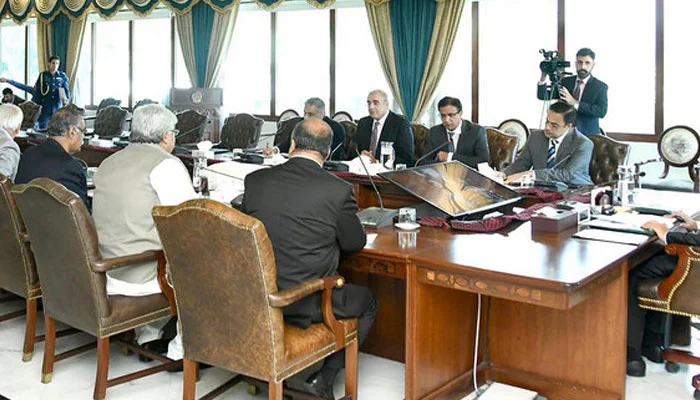The Economic Revival Committee in Islamabad has revealed a detailed roadmap aimed at reducing expenditures by 14 billion rupees. This plan includes freezing salaries, pensions, and allowances, alongside reducing the staff-to-officer ratio. To achieve these objectives, the committee has proposed examining non-targeted subsidies and grants.
The proposals also involve reductions in the Pakistan Security Printing Corporation (PSPC) and the Atomic Energy Commission (AEC). New schemes will be put on hold, and supplementary grants will not be allowed. The government is focusing on practical public-private partnership initiatives and has made specific recommendations under austerity measures. However, the exact timeframe for implementation at both the federal and provincial levels remains unclear.
According to the details, the Economic Revival Committee aims to curtail expenditures by up to 14 billion rupees. The measures include freezing salaries, pensions, and allowances while reducing the staff-to-officer ratio. Notably, non-targeted subsidies and grants will be scrutinized to achieve these cost-cutting goals.
The government is emphasizing actionable public-private partnership projects, with numerous suggestions finalized under the austerity drive. The committee, known as the Cabinet Committee on Economic Revival (CCER), has urged federal and provincial governments to gradually reduce the staff-to-officer ratio to 1:3. However, the CCER has not clarified the timeframe given to both federal and provincial governments for the implementation of this project.
To reduce expenditures, the government has prepared a scheme to review non-targeted subsidies and grants. In the current fiscal year’s final budget, there are subsidies totaling 10 billion and 64 million rupees, with the lion’s share being utilized for power sector subsidies, amounting to 9 billion and 70 million rupees.
Additionally, the government has proposed funding of 14 billion rupees in the form of grants for various institutions and departments. Therefore, a detailed analysis of all these significant fund allocations is necessary.
The government is emphasizing the reduction of public sector development programs at the federal and provincial levels to transfer various provincial schemes of a general nature to federal units, halting new schemes. The Finance Ministry has estimated that the federal government could save 31.5 billion rupees for the current fiscal year by refocusing on PSPC schemes.
The government is also determined to phase out federal expenditures on devolved transactions, potentially saving 32.8 billion rupees in operational expenditures of transferred ministries. Additionally, the government has decided to concentrate on actionable public-private partnership initiatives.
At the federal level, it has been estimated that a 50% cut in the Public Sector Development Program (PSDP) will be transferred to the Public-Private Partnership (PPP) Authority, creating what is known as the PPP pipeline. The government has proposed to continue adhering to IMF conditions, ensuring that no supplementary grants will be allowed for the current fiscal year under the Stand-By Arrangement program.
Under the IMF’s $3 billion Stand-By Arrangement program, a restriction has been imposed on supplementary grants during the duration of the Stand-By Arrangement, ensuring that this limitation will continue in the current fiscal year as well.



